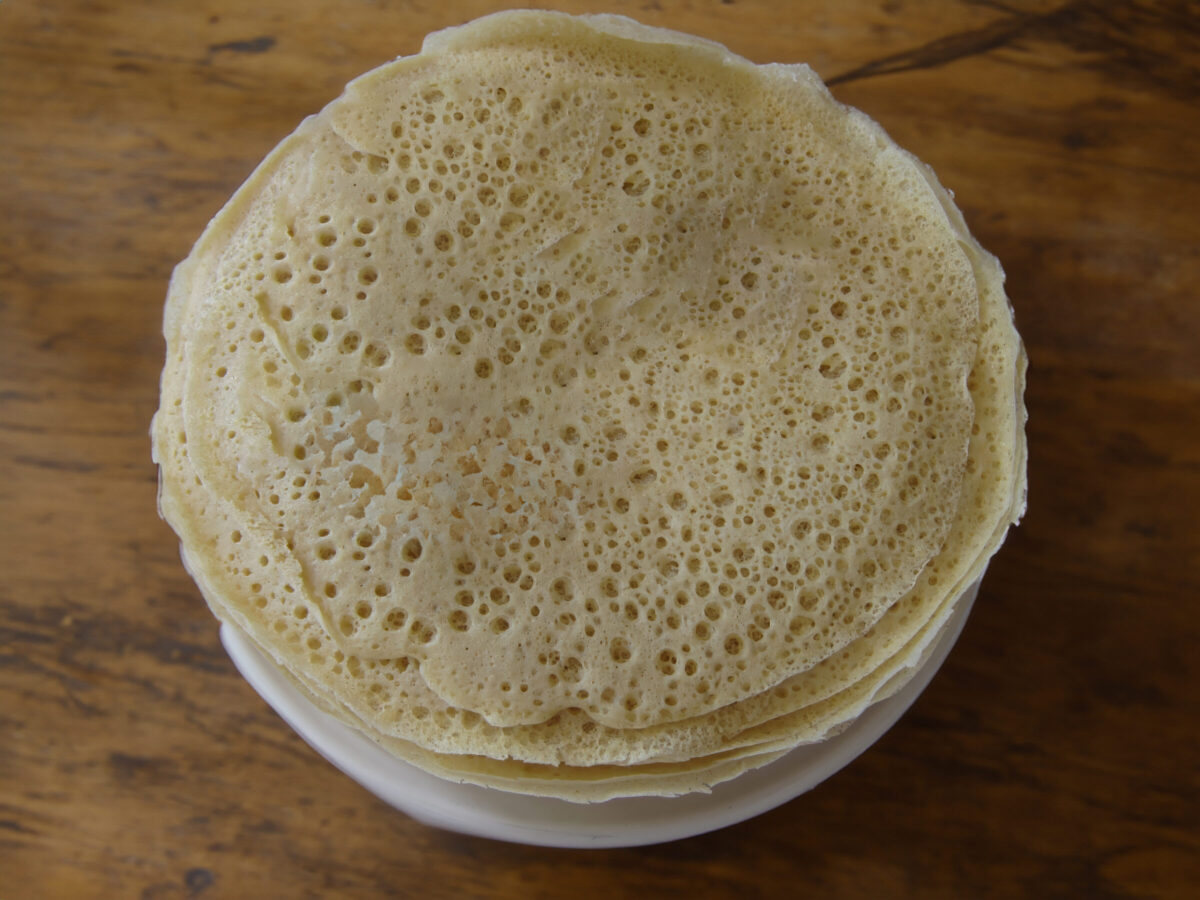
Injera
0 likes
Ethiopian injera
In 1998, I visited Riyadh to run a project for a bank. The funniest part of the trip was taking our Ethiopian housekeeper to the supermarket to buy supplies. We lost track of her as she wore a burka, and we could not remember what her shoes looked like. We had to hang around the checkout until she found us. Lesson learned: we always noted her shoes on subsequent shopping trips.The most memorable meal was one that she cooked for us, as it included Injera.While I was there, Operation Desert Fox started. It was a major four-day bombing campaign on Iraqi targets from December 16, 1998, to December 19, 1998, by the United States and United Kingdom. Injera is a traditional Ethiopian and Eritrean flatbread with a unique, spongy texture. It is a staple food in these countries and is typically made from teff flour, which is a type of gluten-free grain.Teff flour is mixed with water and allowed to ferment for a couple of days, creating a slightly sour taste. The batter is then poured onto a hot, circular griddle and cooked until it becomes a large, circular, pancake-like bread. It is almost like a large, thin crumpet, and I am sure it would be good with melting butter and strawberry jam.Injera is often used as a base for various stews, vegetables, and meats in Ethiopian and Eritrean cuisine. It is served alongside a variety of dishes, and it plays a central role in the eating process, serving as both a utensil and a part of the meal. Diners tear off pieces of injera and use them to scoop up the other dishes, creating a communal and interactive dining experience.Teff is a small cereal grain derived from the “Eragrostis tef” plant. These grains have a mild nutty and molasses flavour. Teff flour is a popular substitute for wheat flour because it is naturally gluten-free and has a favourable nutrient profile. It is naturally high in protein, dietary fibre, and calcium.
Equipment
- Large bowl
- Large, flat pan
Ingredients
- 2 cups teff flour
- 3 cups water
- 1/2 teaspoon salt optional
Instructions
- In a large bowl, mix the teff flour and water thoroughly. Ensure that there are no lumps in the batter. If desired, add salt to the mixture.
- Cover the bowl with a cloth or plastic wrap and let it sit at room temperature for 2-3 days. This allows the batter to ferment. Stir the batter once or twice a day during this fermentation period.
- After the fermentation process, the batter will be slightly bubbly and have a tangy aroma. Stir the batter thoroughly.
- Cooking the injera:
- Heat a non-stick skillet or a large, flat pan over medium heat. Do not add oil.
- Ladle a portion of the batter onto the skillet, swirling it quickly to spread it thinly and evenly. The injera should be thicker than a crepe but thinner than a pancake.
- Cook the injera for 2-3 minutes, or until the edges start to curl up and small bubbles form on the surface.
- You do not need to flip the injera, as it is only cooked on one side. Once it is done, remove it from the skillet and let it cool on a plate.
Notes
Continue the process until you have cooked enough injera for your meal. Injera is typically served with various stews, vegetables, and meats in Ethiopian cuisine. Enjoy your homemade injera with your favorite Ethiopian dishes!
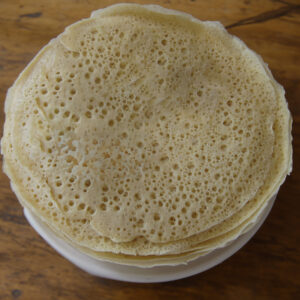
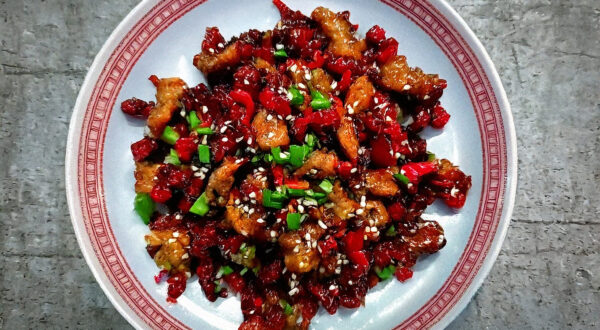
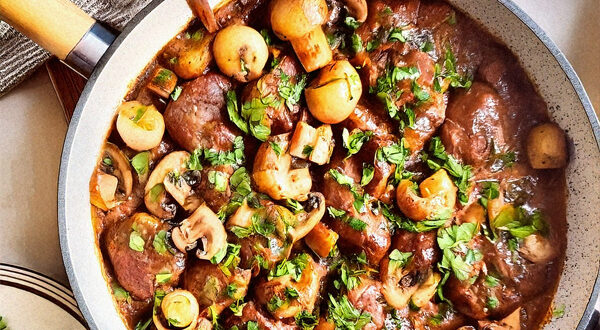

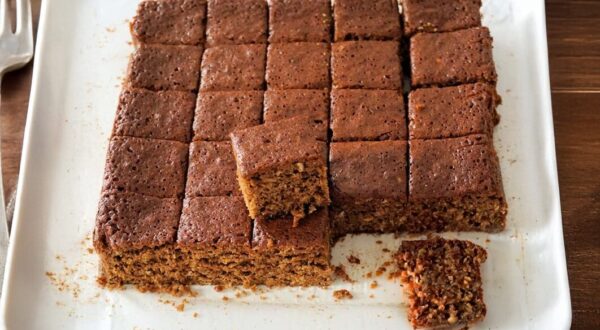
Leave a comment